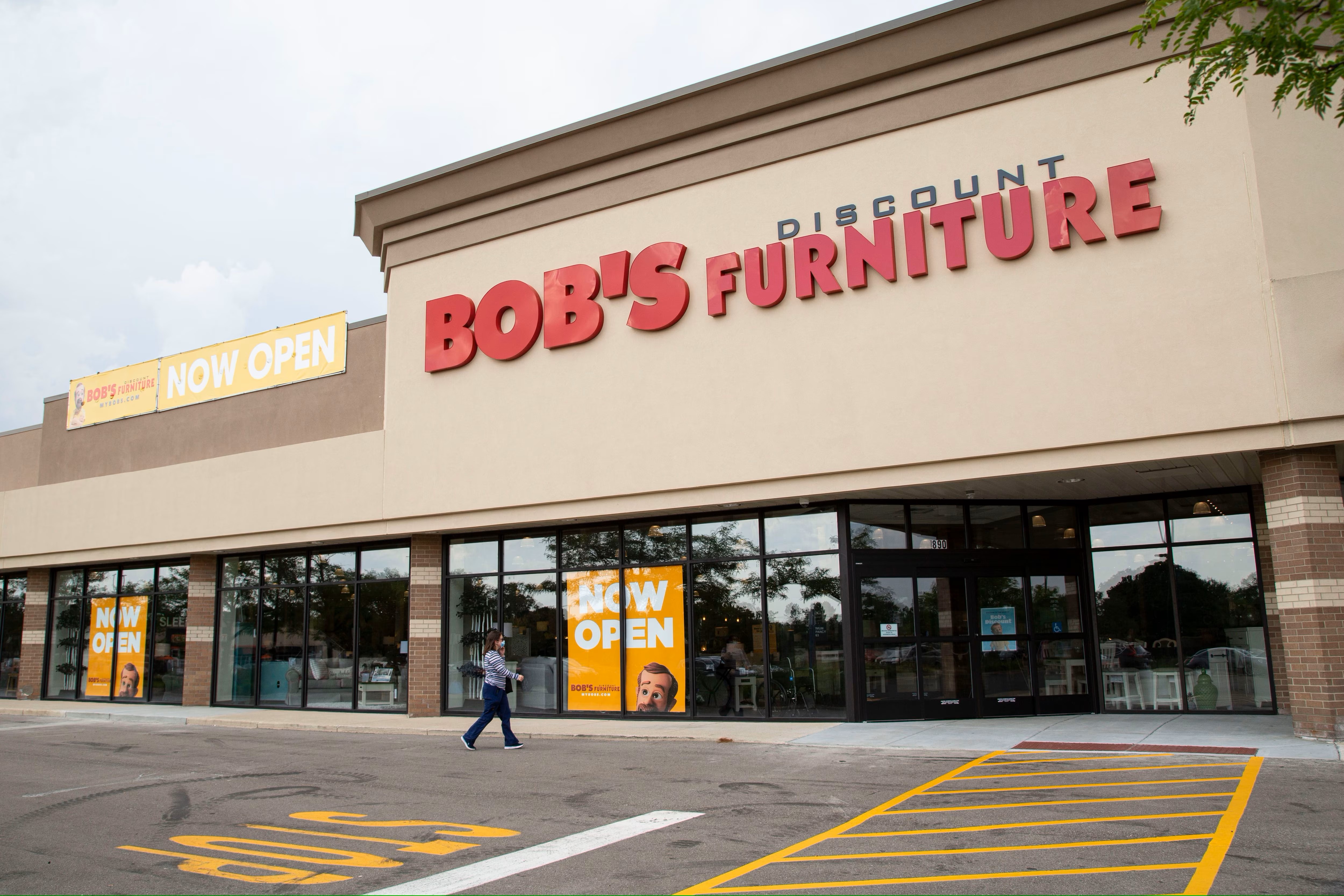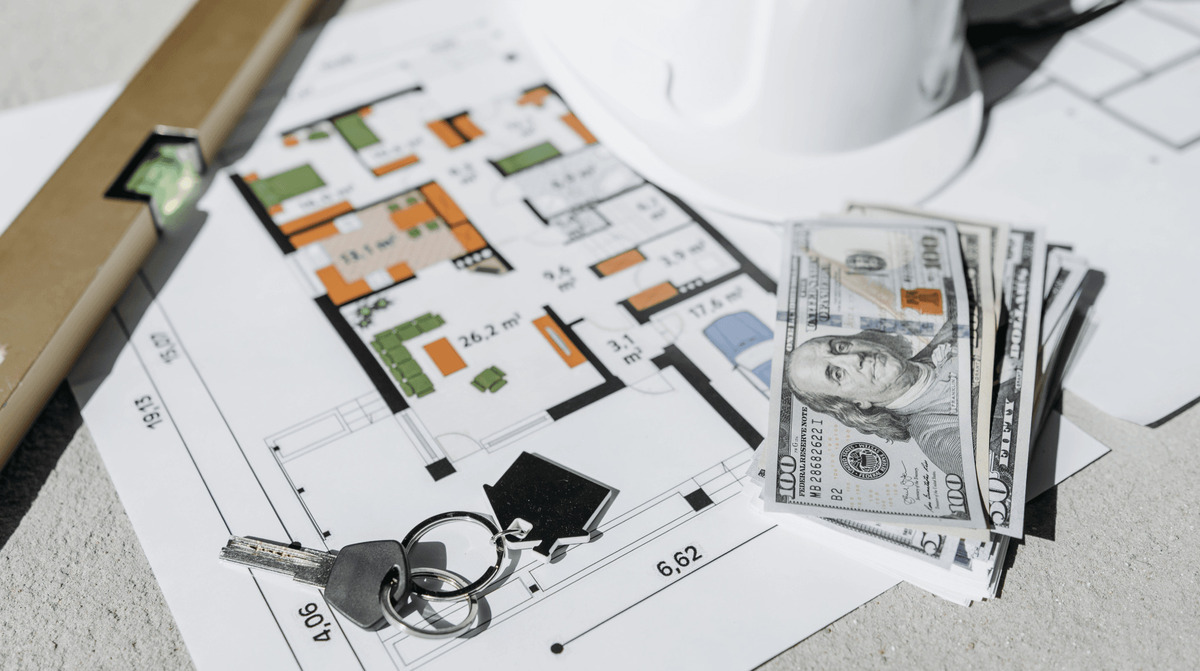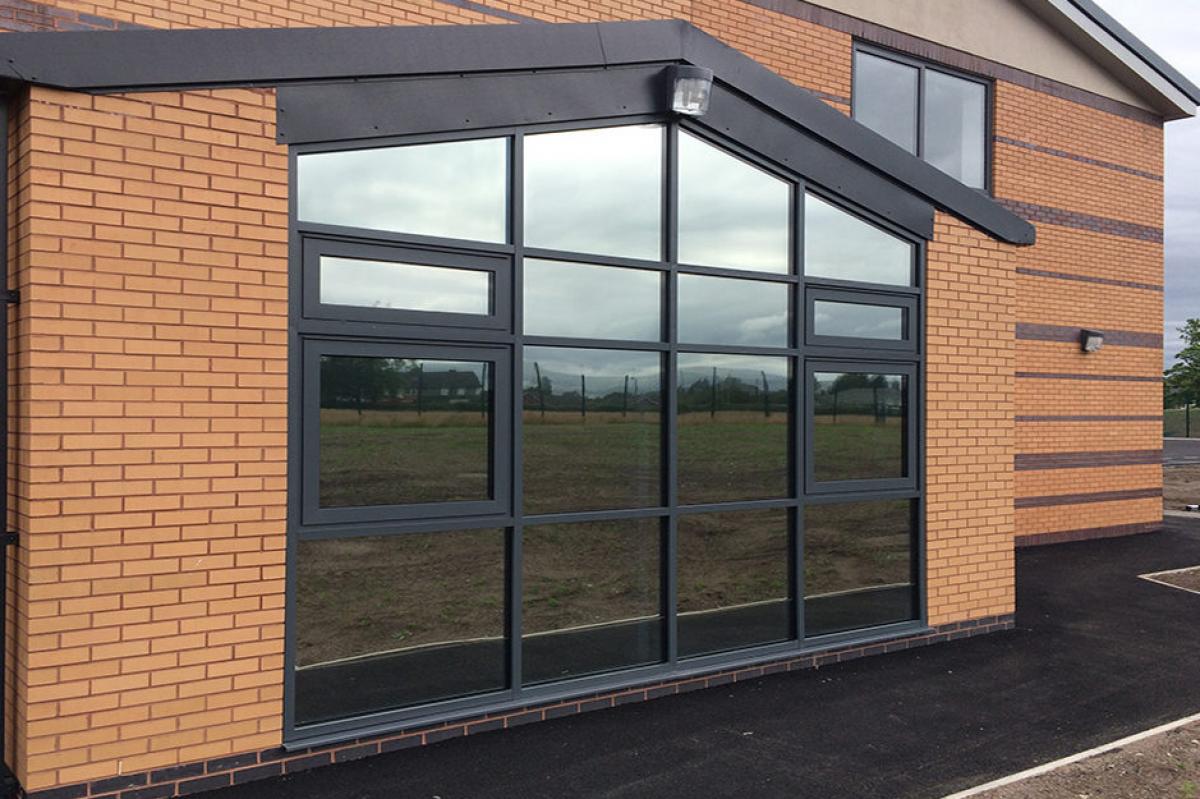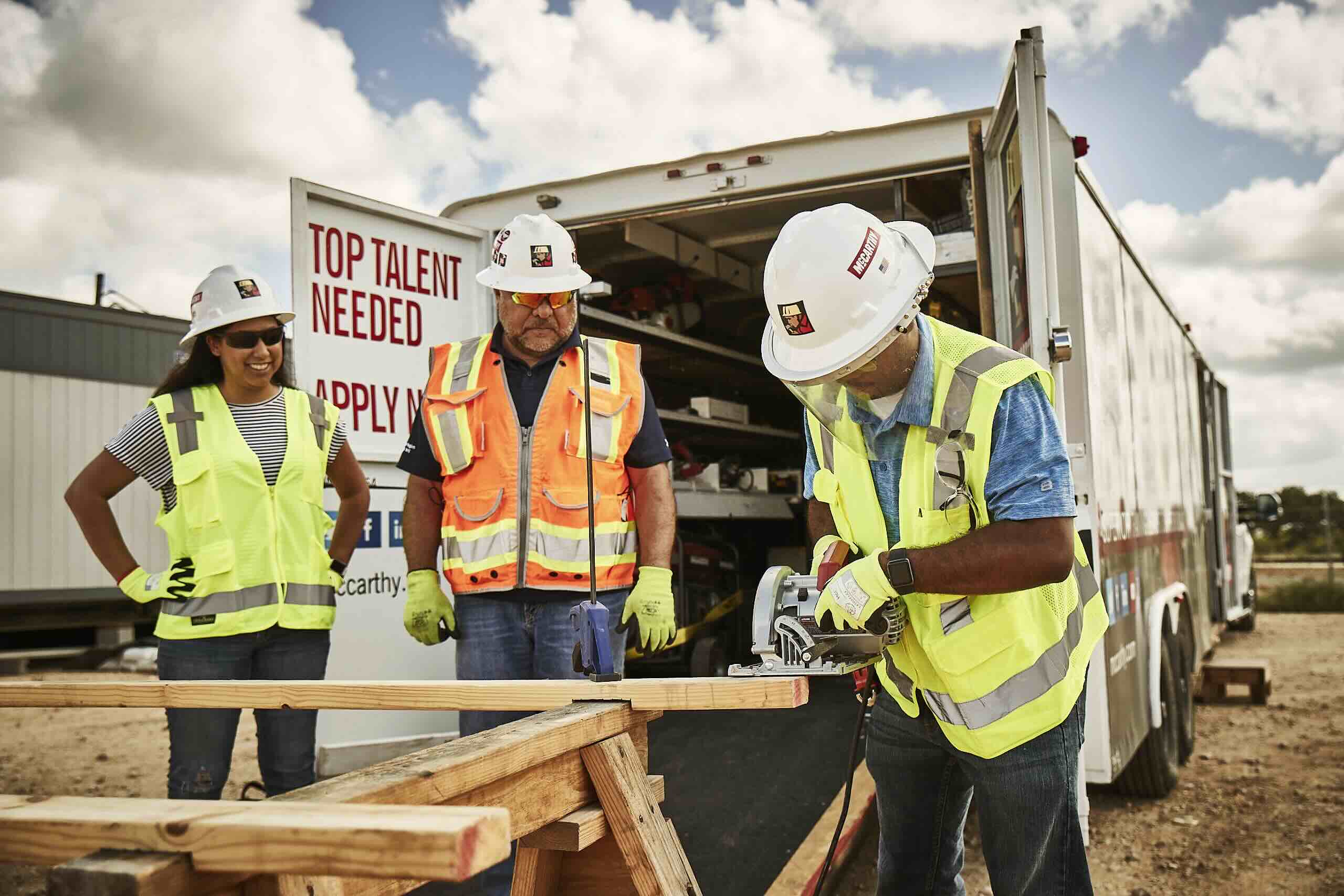Home>diy>Building & Construction>How Does A One Time Close Construction Loan Work


Building & Construction
How Does A One Time Close Construction Loan Work
Modified: February 25, 2024
Learn how a one-time close construction loan works for building construction projects and simplify your financing process. Expert advice and guidance for seamless project completion.
(Many of the links in this article redirect to a specific reviewed product. Your purchase of these products through affiliate links helps to generate commission for Storables.com, at no extra cost. Learn more)
Introduction
A one-time close construction loan is a type of mortgage that allows borrowers to finance the construction of their new home and then convert it into a permanent mortgage once the construction is complete. This type of loan is also known as a “construction-to-permanent” loan or a “single-close” loan. It offers several advantages over traditional construction loans, including simplified financing, convenience, and potential cost savings.
With a one-time close construction loan, borrowers can save time and effort by securing both the construction financing and the permanent financing in a single transaction. This eliminates the need to apply for and undergo the approval process for two separate loans. It also means that borrowers only have to pay closing costs once, rather than twice, which can result in significant savings. Additionally, the interest rates for one-time close construction loans are typically locked in at the beginning of the construction phase, providing borrowers with peace of mind and protection against potential rate increases in the future.
Unlike traditional construction loans, which require borrowers to make interest-only payments during the construction phase, a one-time close construction loan allows borrowers to make full mortgage payments from the start. This can make budgeting and planning more manageable for homeowners, as they can accurately predict their monthly mortgage payments from the beginning of the project.
One-time close construction loans are typically available for both new construction projects and major renovations or additions to existing properties. They can be used to finance a variety of construction projects, including single-family homes, multi-unit residential buildings, and even commercial properties. The loan terms and eligibility requirements may vary depending on the lender and the specific project, so it’s important for borrowers to carefully research and compare different loan options to find the best fit for their needs.
In the following sections, we will explore the benefits, eligibility requirements, and the process of obtaining a one-time close construction loan, as well as the potential risks and considerations that borrowers should be aware of before pursuing this type of financing.
Key Takeaways:
- Streamlined financing, cost savings, and fixed interest rates make one-time close construction loans an attractive option for building a dream home without the complexities of traditional loans.
- Borrowers should carefully assess financial stability, construction risks, and documentation requirements to navigate potential challenges and enjoy the benefits of a one-time close construction loan.
Read more: When Do You Close On A Construction Loan
What is a One-Time Close Construction Loan?
A one-time close construction loan is a unique type of mortgage that combines both the financing for the construction of a new home and the long-term mortgage into a single loan. Unlike traditional construction loans, which require borrowers to secure separate financing for the construction phase and then refinance into a permanent mortgage once the construction is complete, a one-time close construction loan streamlines the process by bundling everything into one loan.
During the construction phase, borrowers typically make interest-only payments based on the amount of money that has been drawn from the loan to cover the construction expenses. Once the construction is complete, the loan automatically converts into a permanent mortgage, and borrowers begin making full monthly mortgage payments.
One of the primary benefits of a one-time close construction loan is the convenience and simplicity it offers to borrowers. Instead of going through the hassle of applying for and securing separate loans for the construction phase and the permanent mortgage, borrowers only need to go through a single application process and obtain approval once for the entire project. This can save time, effort, and potential frustration, as there is no need to navigate the complexities of multiple loan applications.
Additionally, by combining the two loans into one, borrowers can avoid the costs associated with multiple closings. Typically, borrowers would have to pay closing costs twice – once for the construction loan and once for the permanent mortgage. However, with a one-time close construction loan, borrowers only have to pay closing costs once, which can result in significant savings.
Furthermore, one-time close construction loans often come with fixed interest rates. This means that the interest rate is locked in at the beginning of the construction phase and remains the same throughout the life of the loan. This provides borrowers with peace of mind and protection against potential interest rate increases in the future.
In summary, a one-time close construction loan combines both the financing for the construction phase and the permanent mortgage into a single loan. It simplifies the financing process, offers potential cost savings, and provides borrowers with a fixed interest rate. This type of loan is an appealing option for those looking to build their dream home without the hassle of multiple loans and complexities.
Benefits of a One-Time Close Construction Loan
A one-time close construction loan offers several advantages over traditional construction loans. Let’s explore some of the key benefits:
- Streamlined Financing: One of the primary advantages of a one-time close construction loan is the convenience it offers to borrowers. Instead of going through the process of applying for and securing separate loans for the construction phase and the permanent mortgage, borrowers can obtain both types of financing in one transaction. This simplifies the process and eliminates the need to navigate the complexities of multiple loan applications.
- Cost Savings: By combining both the construction loan and the permanent mortgage into one, borrowers can potentially save money on closing costs. Typically, borrowers would have to pay closing costs twice – once for the construction loan and once for the permanent mortgage. However, with a one-time close construction loan, borrowers only have to pay closing costs once, resulting in significant savings.
- Locked-In Interest Rate: One-time close construction loans often come with fixed interest rates. This means that the interest rate is locked in at the beginning of the construction phase and remains the same throughout the life of the loan. This provides borrowers with stability and protection against potential interest rate fluctuations in the future.
- Full Mortgage Payments During Construction: Unlike traditional construction loans that require borrowers to make interest-only payments during the construction phase, a one-time close construction loan allows borrowers to begin making full mortgage payments from the start. This can make budgeting and planning more manageable for homeowners, as they can accurately predict their monthly payments from the beginning of the project.
- Flexible Loan Options: One-time close construction loans are available for various types of construction projects, including single-family homes, multi-unit residential buildings, and even commercial properties. This flexibility allows borrowers to pursue their unique construction goals while still benefiting from the convenience and advantages of a one-time close loan.
Overall, a one-time close construction loan offers simplified financing, cost savings, a locked-in interest rate, and flexibility. It is an attractive option for borrowers looking to finance the construction of their dream home without the complexities and drawbacks of traditional construction loans. However, it is important for borrowers to carefully research and compare different loan options to ensure they find the best fit for their specific needs and circumstances.
Eligibility and Requirements for a One-Time Close Construction Loan
While the specific eligibility criteria and requirements for a one-time close construction loan may vary depending on the lender and the project, there are certain general factors that borrowers should be aware of. Here are some common eligibility requirements for this type of loan:
- Good Credit Score: Lenders typically require borrowers to have a solid credit history and a good credit score to qualify for a one-time close construction loan. A credit score of 680 or higher is generally considered favorable, but lenders may have different requirements, so it’s important to check with each lender for their specific credit criteria.
- Stable Income and Employment: Borrowers need to demonstrate a stable source of income and employment to ensure they can make the monthly mortgage payments. Lenders may require borrowers to provide recent pay stubs, W-2 forms, or tax returns to verify their income and employment status.
- Down Payment: One-time close construction loans typically require a down payment, which is a percentage of the total project cost. The down payment requirement can vary depending on factors such as the borrower’s credit history, the specific lender, and the loan-to-value ratio. Generally, a down payment of 20% to 25% of the total project cost is common, although some lenders may offer programs with lower down payment options.
- Construction Plans and Budget: Borrowers will need to provide detailed construction plans and a budget for the project. This includes architectural plans, permits, and cost estimates from licensed contractors. Lenders will typically review this information to assess the feasibility and value of the project.
- Appraisal and Inspections: An appraisal and inspections are typically required for a one-time close construction loan. The lender needs to ensure that the value of the completed property will be sufficient to cover the loan amount. Additionally, lenders may require regular inspections during the construction phase to ensure that the project is progressing as planned.
- Reserve Funds: Lenders may require borrowers to have reserve funds available to cover unexpected costs or to make mortgage payments during the construction phase. The specific reserve fund requirements can vary depending on the lender and the project, but having sufficient reserves can increase the chances of loan approval.
It’s important for borrowers to remember that each lender may have different eligibility criteria and requirements. Therefore, it’s wise to shop around and compare loan options from different lenders to find the best fit for their specific needs and circumstances. Working with a knowledgeable loan officer or mortgage broker can also provide valuable guidance throughout the loan application process.
By understanding the eligibility requirements and preparing all necessary documentation, borrowers can improve their chances of qualifying for a one-time close construction loan and realizing their dream of building a new home.
The Process of Obtaining a One-Time Close Construction Loan
The process of obtaining a one-time close construction loan involves several steps, from the initial application to the loan disbursement. Here is a general overview of the process:
- Research and Preparations: Start by researching different lenders who offer one-time close construction loans. Compare their loan terms, interest rates, eligibility criteria, and reputation. It’s also helpful to gather the necessary documentation, such as your financial records, construction plans, and budget, to streamline the application process.
- Loan Application: Approach the selected lender and submit an application for a one-time close construction loan. This typically includes providing personal and financial information, such as your income, employment history, credit history, and a detailed description of the construction project.
- Approval and Loan Estimate: The lender will review your application and assess your eligibility based on their criteria. If approved, they will provide you with a loan estimate outlining the loan amount, interest rate, closing costs, and other important terms and conditions. Carefully review and compare loan estimates from different lenders to ensure you choose the best option for your needs.
- Underwriting and Documentation: Once the loan estimate is accepted, the lender will initiate the underwriting process. This involves verifying the information provided and assessing the feasibility of the construction project. You will also need to submit documentation such as construction plans, cost estimates, permits, and other relevant paperwork to support your loan application.
- Appraisal and Inspections: The lender will arrange for an appraisal to determine the value of the completed property. This is crucial for determining the loan-to-value ratio and ensuring that the property is sufficient collateral for the loan. Additionally, the lender may conduct periodic inspections during the construction phase to monitor progress and ensure compliance with the loan terms.
- Loan Closing: Once the construction plans and paperwork are approved, the loan closing process begins. This involves signing the necessary documents, including the loan agreement, mortgage documents, and any other required paperwork. You will also need to pay the closing costs, which can include fees for appraisal, inspections, title search, insurance, and loan origination.
- Construction Phase: After the loan closing, the construction phase begins. During this time, the borrower works with the builder and contractor to complete the construction project according to the agreed-upon plans and budget. The borrower will work closely with the lender to disburse funds at various stages of construction as per an agreed-upon draw schedule.
- Conversion to Permanent Mortgage: Once the construction is complete, the loan automatically converts into a permanent mortgage. At this stage, the borrower begins making full mortgage payments that cover both the principal and interest amount. The terms and conditions of the permanent mortgage will already be outlined in the loan agreement.
Throughout the process, it’s important to maintain open communication with the lender, builder, and contractors involved in the project. Regular updates, document submission, and adherence to project timelines are essential to ensure a smooth and successful construction loan process.
Keep in mind that the specifics of the process can vary depending on the lender and the unique circumstances of the construction project. Working with an experienced loan officer or mortgage broker can provide valuable guidance and support throughout the entire process.
When applying for a one-time close construction loan, make sure to have a detailed construction plan and a qualified builder in place to increase your chances of approval.
Loan Disbursement and Construction Phase
Once the loan is closed and the construction phase begins, the lender will disburse funds at different stages of the project according to an agreed-upon draw schedule. Here’s an overview of the loan disbursement process and what to expect during the construction phase:
- Draw Schedule: A draw schedule is a timeline that outlines when and how funds will be disbursed during the construction phase. This schedule is typically established before the loan closing and is based on the project timeline and milestones. It is important to work closely with the builder, contractor, and lender to establish a realistic and manageable draw schedule.
- Inspections: As the construction progresses, the lender may conduct inspections to verify that the work has been completed according to the plans, specifications, and building codes. These inspections help ensure that the quality of work meets the lender’s requirements and protects their investment in the property.
- Submitting Draw Requests: As specific stages of the construction project are completed, the borrower or the builder will typically submit draw requests to the lender. These draw requests will include documentation such as invoices, receipts, and proof of completed work. The lender will review and verify the documentation before releasing funds for the next stage of the project.
- Funds Disbursement: Once the draw request is approved, the lender will disburse the funds. The disbursement can be made directly to the borrower, the builder, or a designated third party. It’s important to keep accurate records of all payments and maintain proper documentation for transparency and accountability.
- Monitoring and Communication: Throughout the construction phase, it’s essential to maintain open lines of communication with the lender. Regular updates and close collaboration will help ensure that the project stays on track and that the lender’s requirements are met. It’s important to promptly provide any requested documentation and address any concerns or issues that may arise during the construction process.
- Contingency Funds: It’s advisable to have a contingency fund to account for any unforeseen expenses or changes in the construction project. This fund can help cover additional costs that may arise during the course of construction, ensuring that the project can continue without unexpected delays or financial strain.
- Completion and Transition: Once the construction is complete, the borrower’s focus shifts from drawing funds to transitioning into the permanent mortgage phase. The lender will conduct a final inspection to ensure that the project meets all the necessary requirements. After a successful inspection, the loan automatically converts into a permanent mortgage, and the borrower begins making full mortgage payments.
It’s important to note that the loan disbursement and construction phase can vary depending on the lender’s policies and the specifics of the construction project. Working closely with the lender, builder, and contractors is key to ensuring a smooth construction process and efficient use of loan funds.
Effective communication, timely documentation submission, and adherence to the project timeline are crucial for a successful loan disbursement and construction phase. By closely monitoring the progress and working in collaboration with all parties involved, borrowers can help ensure that the construction project stays on track and meets their expectations.
Payment and Repayment Terms of a One-Time Close Construction Loan
Understanding the payment and repayment terms of a one-time close construction loan is essential for borrowers. Here’s an overview of the typical payment and repayment terms associated with this type of loan:
- Interest-Only Payments: During the construction phase, borrowers generally make interest-only payments on the amount of money that has been drawn from the loan to cover the construction expenses. These payments are typically lower than full mortgage payments, as they only include the interest charges on the outstanding loan balance.
- Conversion to Permanent Mortgage: Once the construction is complete, the loan automatically converts into a permanent mortgage. At this point, borrowers begin making full mortgage payments that include both the principal and interest amounts. The specific payment amount will depend on factors such as the loan balance, interest rate, and loan term.
- Fixed Interest Rate: One-time close construction loans often come with fixed interest rates. This means that the interest rate is locked in at the beginning of the construction phase and remains the same throughout the life of the loan. Having a fixed interest rate provides borrowers with stability and predictability in their monthly mortgage payments.
- Amortization Schedule: A one-time close construction loan typically follows an amortization schedule, which outlines the monthly payment amount and the breakdown of principal and interest over the loan term. This schedule helps borrowers track their payments and understand how their mortgage balance decreases over time.
- Due Diligence Period: Some lenders provide borrowers with a period of time known as the “due diligence period” after the construction is complete. During this period, borrowers have the opportunity to identify any issues or defects in the construction and have them addressed by the builder or contractor before assuming full responsibility for the property.
- Repayment Options: One-time close construction loans typically offer various repayment options, including standard repayment, bi-weekly payments, or even additional principal payments. These options provide flexibility for borrowers to choose a repayment plan that aligns with their financial goals and preferences.
- Extra Loan Features: Some lenders may offer additional features or benefits with their one-time close construction loans. These can include options to convert the loan to a different interest rate type in the future, early payment or prepayment options, or the ability to roll the construction loan into a larger mortgage for future home improvements or renovations.
It’s important for borrowers to carefully review the payment and repayment terms of their one-time close construction loan and understand their obligations throughout the loan term. Additionally, it is recommended to consult with a trusted loan officer or mortgage professional to clarify any questions and ensure a clear understanding of the payment structure.
By maintaining regular and timely payments, borrowers can successfully repay their one-time close construction loan and enjoy the benefits of owning their newly constructed home.
Potential Risks and Considerations of a One-Time Close Construction Loan
While a one-time close construction loan offers many benefits, it’s important for borrowers to be aware of the potential risks and considerations associated with this type of financing. Here are some key factors to keep in mind:
- Construction Risks: Construction projects can be complex and unpredictable. Unexpected delays, cost overruns, or issues with contractors or suppliers can arise, potentially impacting the timeline and budget of the project. It’s important to thoroughly research and vet the builder and contractors involved in the construction to mitigate these risks as much as possible.
- Interest Rate Risk: While one-time close construction loans typically offer fixed interest rates, there is still a potential risk if market interest rates decrease significantly during the construction phase. Borrowers may miss out on the opportunity to secure a lower interest rate if they are locked into a fixed rate. It’s essential to carefully evaluate the interest rate environment and consider consulting with a financial advisor to make an informed decision.
- Financial Stability: Building a new home involves significant financial commitments. Borrowers need to ensure they have a stable source of income and sufficient funds to cover the costs of the construction project. Unexpected changes in income or financial circumstances can potentially impact the ability to make mortgage payments during the construction phase or qualify for a permanent mortgage upon completion.
- Property Value: The value of the completed property can be a potential risk factor. If the property does not appraise for the expected value or if the market conditions change, it could impact the loan-to-value ratio and the ability to secure the permanent mortgage. Conducting thorough market research and obtaining a professional appraisal can help in mitigating this risk.
- Detailed Documentation: One-time close construction loans require detailed documentation, including construction plans, budgets, and invoices. It is crucial to maintain accurate records and provide the necessary documentation to the lender in a timely manner. Failure to comply with document requirements can result in delays or complications during the loan approval and disbursement process.
- Contingency Planning: Having a contingency plan and sufficient reserve funds in case of unexpected cost overruns or delays is essential. Unforeseen circumstances that impact the construction project can strain finances and cause additional stress. It’s advisable to have a buffer to handle any unforeseen expenses and ensure the project can continue smoothly.
It’s vital for borrowers to thoroughly assess their financial situation, evaluate the risks involved, and consult with professionals to make informed decisions. By taking precautions and understanding the potential risks, borrowers can navigate the one-time close construction loan process confidently and enjoy the benefits of building their dream home.
Conclusion
A one-time close construction loan offers a streamlined and convenient financing option for borrowers looking to build their dream home. This unique type of loan combines the construction financing and permanent mortgage into a single transaction, eliminating the need for separate loans and multiple closing costs.
Throughout this article, we have explored the various aspects of a one-time close construction loan. We discussed its benefits, including simplified financing, potential cost savings, fixed interest rates, and flexible loan options. The eligibility requirements, documentation needed, and the application process were also outlined to provide borrowers with a comprehensive understanding of what to expect when pursuing this type of loan.
Additionally, we highlighted some potential risks and considerations that borrowers should be aware of, such as construction risks, interest rate fluctuations, and financial stability. Understanding and mitigating these risks through careful planning, thorough research, and maintaining open communication with lenders and contractors are crucial for a successful construction loan experience.
It is important for borrowers to carefully evaluate their own financial situation, project goals, and risk tolerance before deciding to pursue a one-time close construction loan. Consulting with experienced loan officers or mortgage professionals can provide valuable guidance in finding the best loan option and navigating the complex process.
In conclusion, a one-time close construction loan can be an advantageous financing solution for those embarking on a construction project. By understanding the benefits, eligibility requirements, documentation, and potential risks associated with this type of loan, borrowers can make informed decisions and proceed with confidence in building their dream home.
Remember, thorough research, proper planning, and clear communication are key to a successful one-time close construction loan experience. With careful consideration and expert guidance, borrowers can navigate the construction process smoothly and turn their vision into reality.
Frequently Asked Questions about How Does A One Time Close Construction Loan Work
Was this page helpful?
At Storables.com, we guarantee accurate and reliable information. Our content, validated by Expert Board Contributors, is crafted following stringent Editorial Policies. We're committed to providing you with well-researched, expert-backed insights for all your informational needs.















0 thoughts on “How Does A One Time Close Construction Loan Work”